El caso de negocios para ropa activa sostenible: satisfacer la demanda del consumidor & ¿Mejora del valor de la marca?
Las preocupaciones ambientales están impulsando cada vez más las decisiones de compra de los consumidores. Las marcas que ignoran la sostenibilidad del riesgo de perder participación de mercado a competidores más ecológicos, particularmente en la categoría de ropa activa donde la conexión con la naturaleza y el bienestar es primordial.
La ropa activa sostenible representa tanto un imperativo ambiental como una oportunidad de negocio. El 67% de los consumidores consideran la sostenibilidad al comprar ropa activa, y el 73% está dispuesto a pagar más por los productos sostenibles. Las marcas que incorporan materiales reciclados, algodón orgánico o telas biodegradables pueden obtener precios premium al tiempo que atraen a los consumidores conscientes.
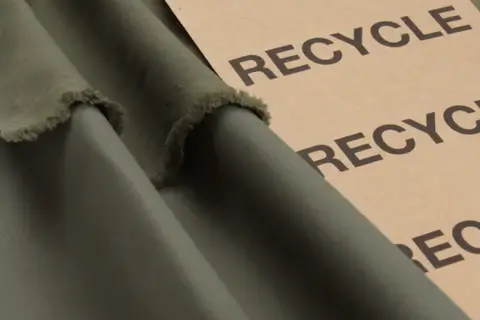
Al tener, hemos adoptado la sostenibilidad en nuestra fabricación de ropa activa, ofreciendo opciones de poliéster recicladas, mezclas de algodón orgánico y soluciones de empaque ecológicas. Nuestra experiencia ha demostrado que la sostenibilidad no solo es buena para el planeta, es bueno para los negocios. Permítanme compartir lo que hemos aprendido sobre el caso comercial convincente para ropa activa sostenible.
¿Por qué la sostenibilidad se está convirtiendo en un imperativo del mercado?
Las preferencias del consumidor están cambiando drásticamente hacia opciones sostenibles. Las marcas que no reconocen este riesgo de tendencia se obsoletan a medida que las alternativas ecológicas capturan la cuota de mercado.
El 67% de los consumidores globales dicen que consideran la sostenibilidad al comprar ropa activa, y este porcentaje aumenta al 73% entre los millennials. En la categoría de aptitud física y bienestar específicamente, el 78% de los consumidores expresan su preocupación por el impacto ambiental de sus compras, lo que hace que la sostenibilidad sea un diferenciador clave en las decisiones de compra.
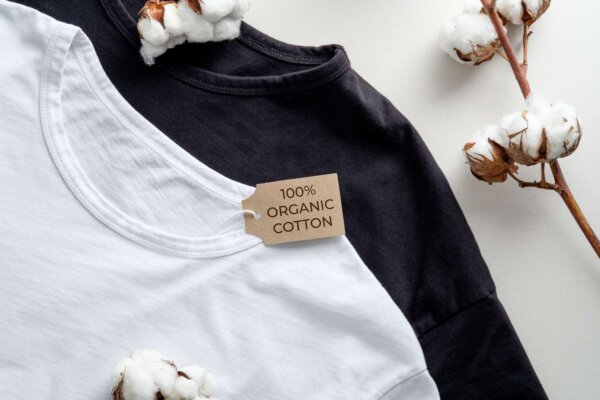
Cuando comenzamos a fabricar ropa activa al tener, la sostenibilidad se consideró un punto de venta de nicho. Hoy, se ha convertido en una expectativa convencional, particularmente en esta categoría. He aquí por qué la sostenibilidad se ha convertido en un imperativo del mercado:
Valores de consumo cambiantes
La investigación de mercado reciente revela cambios dramáticos en las prioridades del consumidor:
| Tendencia del consumidor | Porcentaje | Implicación comercial |
|---|---|---|
| Dispuesto a pagar más por productos sostenibles | 73% | Oportunidad de precios premium |
| Considere el impacto ambiental importante en las decisiones de compra | 67% | Sostenibilidad como ventaja competitiva |
| Busque activamente marcas con fuertes valores ambientales | 58% | Oportunidad de lealtad de marca |
| Han cambiado de marca en función de las preocupaciones ambientales | 35% | Riesgo de pérdida del cliente si no aborda la sostenibilidad |
Diferencias generacionales
Las preferencias de sostenibilidad varían significativamente según la generación:
- Gen Z (18-24): El 83% cree que las empresas deben abordar los problemas ambientales
- Millennials (25-40): El 73% dice que las preocupaciones ambientales afectan sus decisiones de compra
- Gen X (41-56): 60% dispuesto a pagar más por productos sostenibles
- Baby Boomers (57-75): El 52% considere la sostenibilidad en las decisiones de compra
Con generaciones más jóvenes que representan el mercado principal de ropa activa, sus preferencias de sostenibilidad más fuertes son particularmente relevantes para esta categoría.
Preocupaciones específicas de ACTIVEWAR
La industria de la ropa activa enfrenta un escrutinio particular:
- Las telas sintéticas como el poliéster y el nylon son a base de petróleo y no biodegradables
- Los procesos de producción pueden ser intensivos en agua y químicos
- Los enfoques de moda rápidos han llevado a un desperdicio excesivo
- Los consumidores ven cada vez más una desconexión entre los productos centrados en el bienestar y las prácticas ambientalmente dañinas
Estas preocupaciones han creado una oportunidad de mercado significativa para las marcas que pueden abordar auténticamente la sostenibilidad al tiempo que mantienen el rendimiento y el estilo.
Para obtener una descripción completa del mercado de ropa activa y las tendencias del consumidor, visite nuestro análisis detallado: Comprender la ropa activa & Mercado de ropa de yoga: tendencias, demografía & Oportunidades para compradores B2B.
¿Cuáles son los beneficios financieros de la ropa activa sostenible?
Muchas empresas dudan en invertir en sostenibilidad debido a las preocupaciones sobre los costos y los rendimientos. Comprender el caso comercial completo ayuda a justificar estas inversiones.
El retorno de la inversión para ropa activa sostenible se produce a través de múltiples canales: potencial de precios premium (15-30% de puntos de precio más altos), mayor lealtad del cliente (tasas de retención 27% más altas para marcas sostenibles), reputación de marca mejorada, ventajas de colocación minorista y riesgo reducido de futuros problemas de cumplimiento regulatorio.
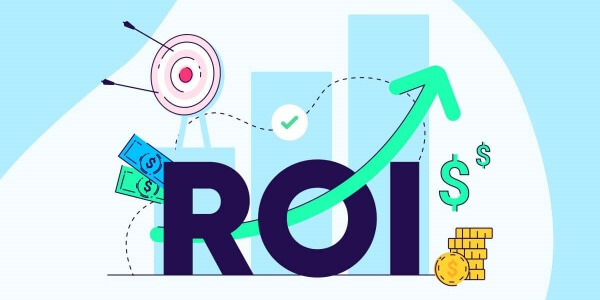
Al tener, hemos visto de primera mano cómo las inversiones de sostenibilidad ofrecen rendimientos comerciales tangibles. Aquí está el caso comercial integral:
Beneficios financieros
Potencial de fijación de precios premium
La investigación de mercado muestra que los consumidores pagarán más por los productos sostenibles:
- El 73% pagará al menos un 10% más por opciones sostenibles
- El 32% pagará un 25% o más por productos con credenciales ambientales sólidas
- En ActiveWear específicamente, las opciones sostenibles comandan 15-30% primas de precio
Mayor volumen de ventas
La sostenibilidad impulsa las decisiones de compra:
- El 67% de los consumidores es más probable que compren productos claramente marcados como ecológicos.
- Las marcas de ropa activa sostenible generalmente ven tasas de conversión 15-25% más altas
- Los minoristas informan 10-20% más altas tarifas de venta para productos de ropa activa sostenibles
Lealtad mejorada del cliente
La sostenibilidad genera relaciones con los clientes más fuertes:
- Las marcas con sólidas credenciales de sostenibilidad disfrutan de una retención de clientes 27% más alta
- Es más probable que el 41% de los consumidores recomiende marcas sostenibles a amigos
- El valor del cliente de por vida aumenta en aproximadamente un 22% para productos sostenibles
Mejora del valor de la marca
Beneficios de reputación
La sostenibilidad fortalece la percepción general de la marca:
- El 64% de los consumidores (y el 72% de los millennials) tienen una imagen más positiva de las marcas con compromisos de sostenibilidad comprobados
- La cobertura de los medios es 2.5 veces más probable para las marcas con historias de sostenibilidad auténticas
- Las tasas de participación en las redes sociales son un 35% más altas para el contenido de productos sostenible
Diferenciación competitiva
En el mercado de ropa activa cada vez más llena:
- La sostenibilidad crea una diferenciación significativa más allá de la funcionalidad básica
- El 52% de los consumidores consideran el impacto ambiental al elegir entre productos de ropa activa similares
- Las credenciales de sostenibilidad ayudan a evitar presiones de precios de productos básicos
Ventajas de colocación minorista
Los principales minoristas priorizan cada vez más productos sostenibles:
- Muchos minoristas han establecido requisitos de sostenibilidad para nuevos proveedores
- La colocación minorista premium a menudo se asigna a opciones sostenibles
- Algunos minoristas ofrecen soporte de marketing específicamente para productos sostenibles.
Mitigación de riesgos
Cumplimiento regulatorio
La adopción de sostenibilidad proactiva reduce los riesgos futuros:
- Las regulaciones ambientales se están volviendo más estrictas a nivel mundial
- La adopción temprana evita cambios forzados costosos más tarde
- Algunos mercados están implementando leyes de responsabilidad del productor extendido
Protección contra la reacción de consumo
La sostenibilidad protege contra la publicidad negativa:
- Las marcas sin compromisos ambientales enfrentan un escrutinio creciente
- Las redes sociales amplifican las preocupaciones ambientales rápidamente
- Las acusaciones de lavado verde pueden causar daños significativos en la marca
Para obtener información detallada sobre estrategias de precios y márgenes de beneficio para ropa activa sostenible, explore nuestro análisis: Maximizando su ROI: ropa activa & Precios al por mayor de yoga, márgenes minoristas & Análisis de rentabilidad.
¿Qué opciones de material sostenible están disponibles para ropa activa?
Muchas empresas desconocen la gama de materiales sostenibles ahora disponibles para ropa activa. Comprender estas opciones es esencial para tomar decisiones informadas de desarrollo de productos.
Los materiales sostenibles de ropa activa incluyen poliéster reciclado (hecho de botellas de plástico posteriores al consumo), nylon reciclado (a menudo de redes de pesca y desechos de alfombras), algodón orgánico (cultivado sin pesticidas dañinos) y telas innovadoras de rendimiento natural como el liocell a base de eucalipto. Cada uno ofrece diferentes características de rendimiento y beneficios de sostenibilidad.
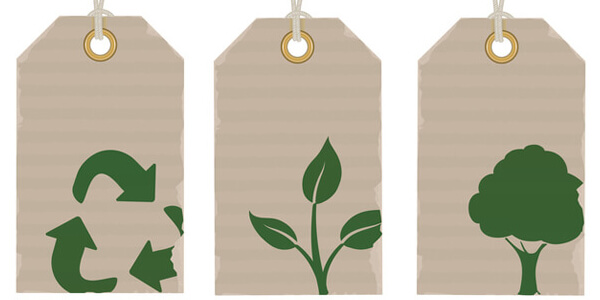
Al tener, hemos desarrollado ropa activa utilizando varios materiales sostenibles. Aquí está nuestra evaluación de las opciones clave:
Materiales sintéticos reciclados
Poliéster reciclado
Beneficios ambientales:
- Desvía botellas de plástico de vertederos y océanos
- Requiere 30-50% menos de energía que el poliéster virgen
- Reduce la dependencia del petróleo
- Produce un 54% menos de emisiones de carbono que el poliéster virgen
Características de rendimiento:
- Rendimiento casi idéntico al poliéster virgen
- Excelente reducción de humedad
- Buena durabilidad y colores.
- Propiedades de secado rápido
Consideraciones comerciales:
- 10-15% Costo Premium sobre el poliéster virgen
- Strong Marketing Story (botellas a fabricación)
- Ampliamente disponible en varias cualidades
- Se puede certificar a través de GRS (estándar reciclado global)
Nylon reciclado
Beneficios ambientales:
- A menudo hecho de redes de pesca, desechos de alfombras o desechos previos al consumo
- Reduce los desechos en océanos y vertederos
- Requiere un 80% menos de agua que el nylon Virgin
- Produce un 90% menos de Co₂ que Virgin Nylon
Características de rendimiento:
- Comparable a Nylon Virgin en la mayoría de las propiedades
- Excelente estiramiento y recuperación
- Sensación de mano suave
- Duradero y resistente a la abrasión
Consideraciones comerciales:
- 15-25% Costo Premium sobre Virgin Nylon
- Disponibilidad limitada pero creciente
- Historia particularmente convincente para el nylon de desechos oceánicos
- Se puede certificar a través de GRS
Materiales naturales y semisintéticos
Algodón orgánico
Beneficios ambientales:
- Cultivado sin pesticidas o fertilizantes sintéticos
- Utiliza un 88% menos de agua que el algodón convencional
- Promueve la salud del suelo y la biodiversidad
- Reduce la exposición a los agricultores a productos químicos nocivos
Características de rendimiento:
- Transpirabilidad natural y comodidad
- Sensación de mano suave
- Propiedades hipoalergénicas
- Lo mejor para actividades de intensidad baja a moderada
Consideraciones comerciales:
- 20-30% Costo Premium sobre algodón convencional
- Requiere mezclar con elastano para estirarse
- Puede ser certificado a través de GOTS (estándar de textil orgánico global)
- Fuerte atractivo para los consumidores ecológicos
Lyocell/Tencel
Beneficios ambientales:
- Hecho de pulpa de madera cosechada de manera sostenible
- El proceso de producción de circuito cerrado recicla el 99% de los solventes
- Material biodegradable
- Requiere menos agua que algodón
Características de rendimiento:
- Gestión de humedad natural
- Textura suave y sedosa
- Transpirable y regular la temperatura
- Naturalmente inhibe el crecimiento bacteriano
Consideraciones comerciales:
- 15-25% Costo Premium sobre las telas convencionales
- A menudo mezclado con otras fibras para el rendimiento
- Disponibilidad e innovación creciente
- Potencial de posicionamiento de lujo
Gráfico de comparación de materiales
| Material | Costo Premium | Nivel de rendimiento | Mejor para |
|---|---|---|---|
| Poliéster reciclado | 10-15% | Excelente | Actividades de alta intensidad, gestión de humedad |
| Nylon reciclado | 15-25% | Excelente | Yoga, actividades de estudio, piezas de compresión |
| Mezclas de algodón orgánico | 20-30% | Bien | Actividades de bajo impacto, piel sensible |
| Lyocell/Tencel | 15-25% | Muy bien | Posicionamiento premium, regulación de la temperatura |
Para obtener información detallada sobre materiales y tecnología de ropa activa, visite nuestra guía integral: Ropa activa & Tecnología de desgaste de yoga & Materiales: una guía del comprador para telas de rendimiento, construcción & Durabilidad.
¿Cómo implementa una estrategia de ropa activa sostenible?
Muchas empresas luchan por implementar la sostenibilidad de manera efectiva. Sin un enfoque estratégico, los esfuerzos pueden ser fragmentados, ineficaces o vulnerables a las acusaciones de lavado verde.
La implementación de una estrategia de ropa activa sostenible exitosa requiere un enfoque gradual: realizar una evaluación de sostenibilidad de los productos actuales, identificar áreas prioritarias para mejorar, desarrollar objetivos de sostenibilidad claros, seleccionar materiales y procesos apropiados, obtener certificaciones relevantes y crear marketing auténtico que evite el lavado ecológico.
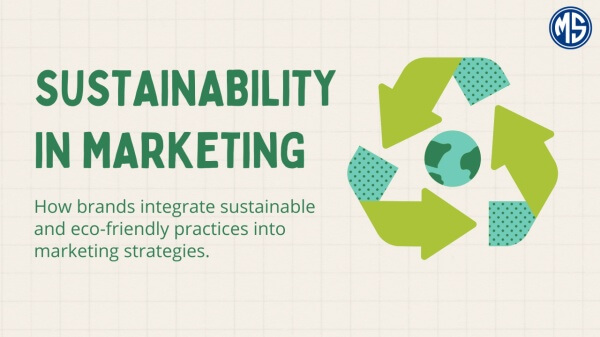
Al tener, ayudamos a nuestros socios a desarrollar e implementar estrategias efectivas de sostenibilidad. Aquí está nuestro enfoque recomendado:
Fase 1: Evaluación y establecimiento de objetivos
Comience por comprender su impacto ambiental actual:
- Evaluación del ciclo de vida del producto: Evaluar el impacto ambiental en todo el ciclo de vida del producto
- Análisis de materiales: Evaluar los materiales actuales para las preocupaciones de sostenibilidad
- Mapeo de la cadena de suministro: Identifique los puntos críticos ambientales clave en su cadena de suministro
- Evaluación comparativa de la competencia: Comprender lo que están haciendo otros en el mercado
Establezca objetivos de sostenibilidad claros y medibles:
- Objetivos materiales: e.g., "50% recycled content by 2024"
- Reducción de carbono: e.g., "30% reduction in carbon footprint by 2025"
- Reducción de desechos: e.g., "Zero waste to landfill from production by 2023"
- Conservación del agua: e.g., "40% reduction in water usage by 2024"
Fase 2: Estrategia de implementación
Desarrollar un plan de implementación por etapas:
Sustitución de material
- Comience con productos centrales: Comience con sus bestsellers para obtener el máximo impacto
- Enfoque híbrido: Considere mezclas de materiales sostenibles y convencionales como una transición
- Prueba de rendimiento: Garantizar que las alternativas sostenibles cumplan con los requisitos de rendimiento
- Análisis de costos: Calcule el ROI, incluidas las posibles oportunidades de primas de precios
Mejoras de la cadena de suministro
- Selección de socios de fabricación: Elija Partners con credenciales de sostenibilidad
- Optimización de procesos: Identificar oportunidades de reducción de agua y energía
- Eficiencia de transporte: Optimizar los métodos de envío y el embalaje
- Reducción de desechos: Implementar programas de eficiencia de corte y reciclaje de chatarra
Estrategia de certificación
- Identificar certificaciones relevantes: Seleccione certificaciones que coincidan con sus reclamos
- Desarrollar sistemas de documentación: Cree procesos para rastrear y verificar las reclamaciones de sostenibilidad
- Verificación de terceros: Involucrar la verificación independiente de las reclamaciones de sostenibilidad
- Mejora continua: Plan de mantenimiento y expansión de certificación continua
Fase 3: Marketing y comunicación
Desarrollar mensajes de sostenibilidad auténticos:
- Ser específico: Use hechos concretos en lugar de reclamos vagas
- Ser transparente: Reconocer las áreas que aún se están mejorando
- Ser educativo: Ayudar a los consumidores a comprender el impacto de sus elecciones
- Evite el lavado verde: No exagere los beneficios ambientales
Canales de comunicación efectivos:
- Etiquetado de productos: Información de sostenibilidad clara sobre etiquetas y embalajes
- Contenido del sitio web: Sección de sostenibilidad dedicada con información detallada
- Redes sociales: Actualizaciones periódicas sobre iniciativas de sostenibilidad y progreso
- Capacitación del personal: Asegúrese de que los miembros del equipo puedan explicar con precisión las características de sostenibilidad
Marco de cálculo de ROI
Al evaluar las inversiones de sostenibilidad, considere este marco:
| Categoría de inversión | Aumento de costos típico | Rendimiento potencial | Período de recuperación |
|---|---|---|---|
| Materiales reciclados | 10-15% | 15-25% Precio Premio | Inmediato a 6 meses |
| Materiales orgánicos | 20-30% | 20-30% Precio Premio | Inmediato a 6 meses |
| Embalaje sostenible | 5-15% | 5-10% de mejora de conversión | 6-12 meses |
| Certificación de sostenibilidad | $ 2,000-10,000 anuales | 10-20% Aumento de la colocación del minorista | 6-18 meses |
Para obtener orientación sobre el desarrollo de su propia línea de ropa activa sostenible, visite nuestro recurso detallado: Su marca, su producto: The ActiveWear de la Guía completa de la etiqueta privada (OEM/ODM) & Fabricación de ropa de yoga.
Conclusión
El caso de negocios para ropa activa sostenible es convincente y multifacética. Más allá de satisfacer la creciente demanda de los consumidores de productos ambientalmente responsables, las iniciativas de sostenibilidad ofrecen beneficios comerciales tangibles a través de oportunidades de precios premium, mayor lealtad del cliente, valor de marca mejorado y mitigación de riesgos.
Al tener, estamos comprometidos a apoyar a nuestros socios en el desarrollo de ropa activa verdaderamente sostenible que brinde beneficios ambientales y comerciales. Al adoptar la sostenibilidad como una estrategia comercial central en lugar de una ocurrencia posterior de marketing, las marcas pueden posicionarse para el éxito a largo plazo en este mercado en rápida evolución.
Para obtener una descripción completa de toda la categoría de ropa activa, incluidas las tendencias del mercado y las oportunidades de negocios, visite nuestra Guía Ultimate B2B para el abastecimiento & Vender ropa activa & Ropa de yoga.
Preguntas frecuentes (preguntas frecuentes)
¿Cuál es la característica de sostenibilidad más importante para los consumidores de ropa activa?
Si bien las preferencias varían según el segmento, la investigación muestra que el contenido reciclado (particularmente el poliéster reciclado de las botellas de plástico) es la característica de sostenibilidad más valorada universalmente, seguida de un uso reducido de agua y materiales orgánicos.
¿Cuánto más los consumidores están dispuestos a pagar por ropa activa sostenible?
La investigación de mercado indica que el 73% de los consumidores pagarán al menos un 10% más por opciones sostenibles, mientras que el 32% pagará primas del 25% o más por los productos con sólidas credenciales ambientales.
¿Qué certificaciones de sostenibilidad son más valiosas para ropa activa?
GRS (Global Recycled Standard) es más valioso para reclamos de contenido reciclado, GOTS (estándar de textiles orgánicos globales) para materiales orgánicos y Bluesign® para la producción general del medio ambiente. OEKO-TEX Standard 100 proporciona credibilidad de seguridad esencial.
¿Cómo pueden las pequeñas marcas competir con las grandes empresas con la sostenibilidad?
Las marcas pequeñas a menudo pueden implementar iniciativas de sostenibilidad de manera más rápida y auténtica que las grandes corporaciones. Concéntrese en la comunicación transparente, los beneficios ambientales específicos y la creación de conexiones genuinas con los consumidores con mentalidad de sostenibilidad.
¿Es mejor centrarse en materiales sostenibles o fabricación sostenible?
Ambos son importantes, pero los materiales sostenibles generalmente tienen una visibilidad y un impacto de marketing más inmediato del consumidor. Sin embargo, un enfoque integral que aborda los materiales y los procesos de fabricación crea el posicionamiento de sostenibilidad más fuerte.
¿Cómo evito las acusaciones de lavado verde cuando comercializan ropa activa sostenible?
Sea específico sobre las afirmaciones ambientales, proporcione evidencia y certificaciones para respaldarlos, reconocer las áreas que aún se mejoran y centrarse en el progreso en lugar de la perfección. La transparencia sobre su viaje de sostenibilidad genera credibilidad.
Obtenga una cotización gratuita para sus proyectos de ropa activa
